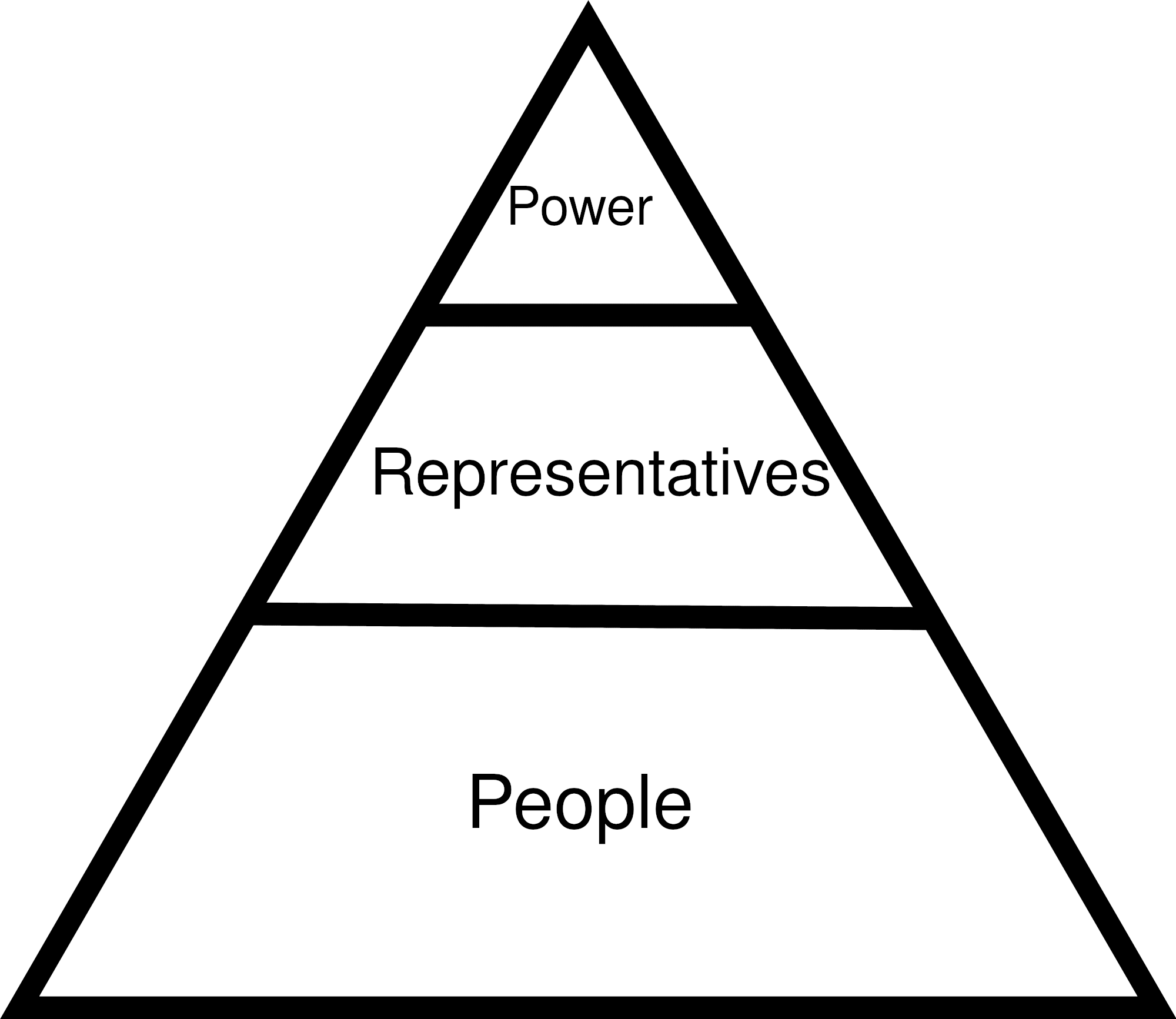
In my previous musing, I discussed a fairly broad history of what democracy is, and how the United States is not a democracy. I received various messages from people, all more or less stating the same thing. Paraphrasing what was broadly meant: “If democracy means rule by the people, isn’t our classical liberal system, consent by the governed, a type of democracy? After all, the power of our government is derived from the people?” I do agree that the legitimacy of government is derived from the governed, but that is not quite the same as the power of the government is derived from the power of the people.
As stated in the previous musing, government has one express original purpose: Act as an arbiter to enact justice. Government only really exists in social settings where the size of a community is large enough that the ability to know, and by extension, trust, every individual, is a laborious task. Government, whether it is a monarchy, an oligarchy, totalitarian dictatorship, democracy, etc, has to have a set of rules that everyone within the society abides by, and those who break the rules are either punished, or recompense the victims. The legitimacy, or consent of the governed to be governed by a government is to enact justice for laws in which the governed agree to.
So how does democracy fit into this, and how come the United States is not a democracy? As stated above, the literal definition of democracy, people power (demos-kratos), means that the power of government rests within the hands of the people. Not only does a democracy require the consent of the people to exist, it requires the people (or whoever is considered a participant) to participate in whatever the system of consensus building is. Ultimately, democracy is just a system in which the governed directly decide through consensus what the community will or won’t do, exercising the power of government to enact it. In a democracy, the people are the government.
This is in contrast to the republican system. In a republic, the governed do not directly participate in the consensus building of government. The people within a republic are not the state; the state is a distinct entity from the people. In the diagram at the beginning of the musing, the triangle has a buffer layer between “the people” and “power”, which is the representatives. In a republic, the governed give power and privilege to a select class of people, in order to functionally work the government. In the case of the United States, our system is divided into much more than just a single axis of representatives, as that would just be a straight elected oligarchy, but rather through the tripartite federal government, but balanced as another tripartite between the federal government, the states, and the people (the governed).
The American system is more than merely a republic, it is a republic of republics. The United States is three republics within one border. Not only is the will of the people represented, but the will of the states, essentially smaller nations within a larger nation, is represented, and the will of the federal government, the nation as an aggregate, is represented. A system this complex cannot be a democracy, because it is not just representing people, but rather discrete entities made up of the very people that make up the nation as a whole, that are distinct across the nation.
I will end with the legendary Ben Franklin quote at the closing of the Constitutional Convention in 1787. As he was exiting, he was asked if the United States was to be a monarchy or a republic. He replied “A republic, if you can keep it”.